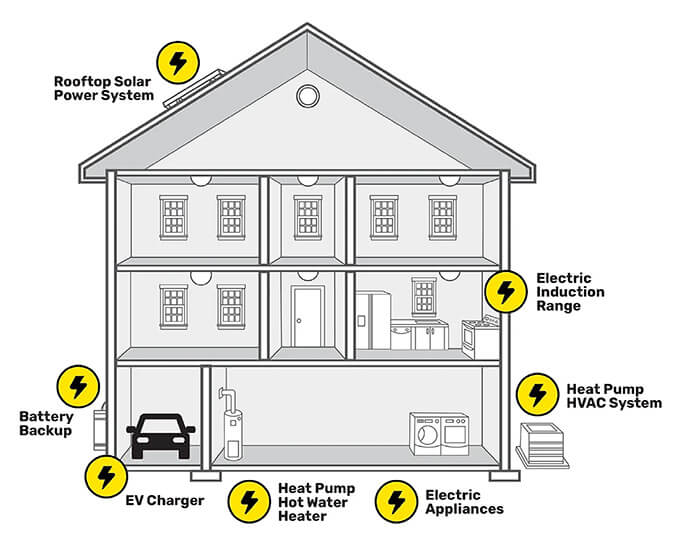The Inflation Reduction Act, or IRA, became law in August 2022. It’s packed with incentives across the entire value chain, including domestic manufacturing, energy-efficient products, and clean saving energy.
But these fantastic incentives do not yet match the realities of what you can get today for your electrification project. The table below shows the most significant IRA electrification incentives that are available to homeowners in 2023, as well as pending IRA incentives in 2024. Many utilities, counties and cities also have localized electrification incentives, such as the SVCE and PCE rebates shown in this table.
There’s a clear divide between tax credit incentives and rebate incentives. Tax credits are the heroes, with no application process, simple documentation and automatic credit on next year’s tax return. The only downside with tax credit incentives is that they only make sense for homeowners who have an annual tax liability.
Rebate incentives — while well-intentioned — often get bogged down with paperwork, documentation and payment delay nightmares. The rebate terms in the IRA are set by the Department of Energy (DOE), and administered by state energy departments, such as the California Energy Commission (CEC). Unfortunately, even though these appealing rebates have been dangling in front of our eyes since August of 2022, the administration details and forms are not yet available to contractors and customers.
There are two other aspects of rebate incentives that you need to consider. First, the IRA rebate incentives are only available to homeowners whose average gross income is less than 150% of the local median income. Second, the additional documentation and paperwork requirements for some rebate programs exceed the value of the incentive. For example, the $1,750 IRA rebate for a heat pump water heater (HPWH) that will be available in 2024 may require a blizzard of paperwork, a contractor affidavit, code-required plumbing upgrades, and a finalized building permit — increasing costs of the HPWH project from $4,000 to $6,500. In other words, the realistic costs of getting the rebate are higher than the value of the rebate itself!
The IRA is the biggest clean energy legislation in the U.S. Ever. There is no doubt in my mind that these incentives will accelerate our transition away from polluting sources of energy. But there are a few bumps in the road to electrification. For more about the realities of the IRA for your home, please tune into this week’s Energy Show.

